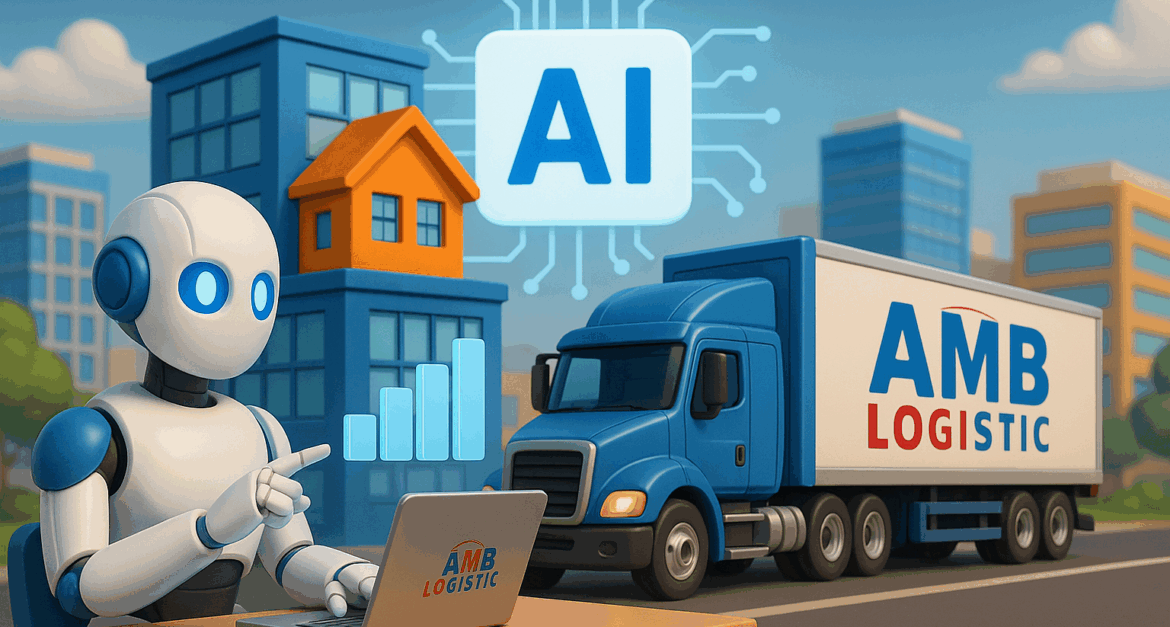
Introduction: Past the Storm, Into the System
While much of the nation grapples with floodwater and washed-out routes, another current is reshaping U.S. logistics—one far less visible but profoundly transformational.
In the shadow of natural disasters and market unpredictability, logistics leaders are leaning into strategic pivots that promise long-term resilience: AI-driven optimization and a radical rethink of industrial real estate investment.
At AMB Logistic, we’re not only adapting to today’s disruptions—we’re studying the signals of tomorrow. And the data is clear: automation and inland asset positioning aren’t just trends. They’re pillars of the new freight economy.
Port Power: A Record-Breaking Surge
This month, the Port of Los Angeles shattered its June record by moving over 892,000 TEUs—an 8% year-over-year spike. Behind the scenes, this surge is driven by importers racing to beat mid-August tariff hikes, prompting early shipments and stockpiling ahead of Q3.
While impressive, the growth may be short-lived. Analysts forecast a volume dip by late summer as pulled-forward inventories slow demand and political uncertainty adds turbulence to global supply chains.
At AMB Logistic, we view this as a sign: fluid adaptability in the face of volatile cycles is now more valuable than static efficiency.
AI Is Here—and It’s Not Just Buzz
Logistics has officially crossed the threshold from digital to intelligent.
Today’s most competitive freight networks are investing in AI-powered tools that transform routing, asset visibility, customer experience, and even driver behavior analytics.
Key AI Use Cases Now in Operation:
- Last-Mile Optimization: Predictive delivery windows using real-time weather, traffic, and driver fatigue metrics.
- Predictive Maintenance: Machine learning models analyzing brake wear, tire temperature, and engine stress to prevent breakdowns before they occur.
- Dynamic Pricing Models: AI adjusting quotes and route bids based on urgency, lane congestion, and seasonal demand.
- Fraud & Theft Detection: Real-time AI scanning for GPS anomalies, unauthorized load stops, and trailer tampering.
AMB Logistic has already deployed several of these technologies across our platform, enabling quicker dispatch, fewer missed appointments, and greater driver trust.
Warehouse Real Estate: The Rise of Strategic Affordability
As coastal congestion and zoning challenges drive up costs, logistics investors are repositioning themselves further inland—betting on affordable, high-occupancy warehouse portfolios in emerging freight corridors.
Recent Highlights:
- Brookfield’s $428M Move: Acquired 53 aging but efficient warehouses in Texas, Tennessee, and Georgia. Their value? 96% occupancy and proximity to labor-rich, less-regulated zones.
- Lovett Industrial’s Expansion: Launching a 1.5M sq ft project in Schertz (San Antonio area) and another in Austin near Tesla’s Gigafactory, signaling high-growth expectations from e-commerce, automotive, and clean tech freight.
This marks a shift away from mega-DCs toward modular fulfillment hubs with quicker access to highways, cross-docks, and zone-skipping advantages.
AMB Logistic is currently evaluating its own inland hub expansion to align with this trend.
A New Freight Map Is Emerging
Between the AI revolution and shifting warehouse strategy, the traditional supply chain map is being redrawn.
Key Shifts to Watch:
- From Major Ports to Tier-2 Gateways: Increased volumes at Houston, Savannah, and Norfolk as LA/Long Beach experience volatility.
- From Coastal to Inland Hubs: As seen in the Brookfield and Lovett cases, demand is moving toward tax-efficient and climate-resilient regions.
- From Static SLAs to Smart Freight Contracts: Using machine learning to set realistic, situation-aware performance benchmarks.
At AMB Logistic, we call this “adaptive infrastructure”—a model where systems, people, and assets flex as fast as demand does.
What It Means for Shippers and Partners
These changes aren’t happening in the background—they affect everything from pricing and planning to carrier selection and SLA compliance.
If you’re a shipper, now is the time to:
- Review your routing protocols and build AI-driven rerouting capabilities.
- Audit your warehouse network for climate, tax, and zoning risk exposure.
- Prioritize logistics partners who demonstrate innovation, not just availability.
If you’re a carrier, invest in:
- Smart fleet tech and maintenance forecasting tools.
- Route management systems that go beyond GPS and look ahead.
- Scalable partnerships with brokerages aligned with inland growth corridors.
AMB Logistic: Navigating Smarter
At AMB Logistic, our logistics model is built on a dual engine: technology and trust.
As AI reshapes operations and strategic location reshapes fulfillment, we’re already ahead:
- Our proprietary Smart Freight OS integrates real-time AI for routing and load allocation.
- We partner with warehousing providers who prioritize elevated terrain, flexible zoning, and smart energy systems.
- Our analytics teams run weekly adaptive stress tests on our routing, warehouse, and capacity models.
Why? Because we’re not waiting for the next disruption to adapt. We’re building logistics that predict and outperform it.
Conclusion: Freight’s Future Is Not at the Docks—It’s in the Data
The logistics industry has entered a new chapter—defined not by proximity to coastlines, but by proximity to intelligence, agility, and affordability.
Whether it’s shifting freight volumes, smarter delivery tools, or inland warehouse migration, the message is clear:
Move smarter. Build smarter. Predict faster.
At AMB Logistic, that’s not just a headline—it’s our operating principle.
Contact AMB Logistic
Email: info@amblogistic.us
Website: www.amblogistic.us
Phone: +1 (888) 538-6433
Tags: AI Logistics, Smart Freight, Warehouse Strategy, Inland Distribution, Brookfield Logistics, Port Surge 2025, Last-Mile Automation, AMB Freight Tech, DAT Integration, Freight Resilience




